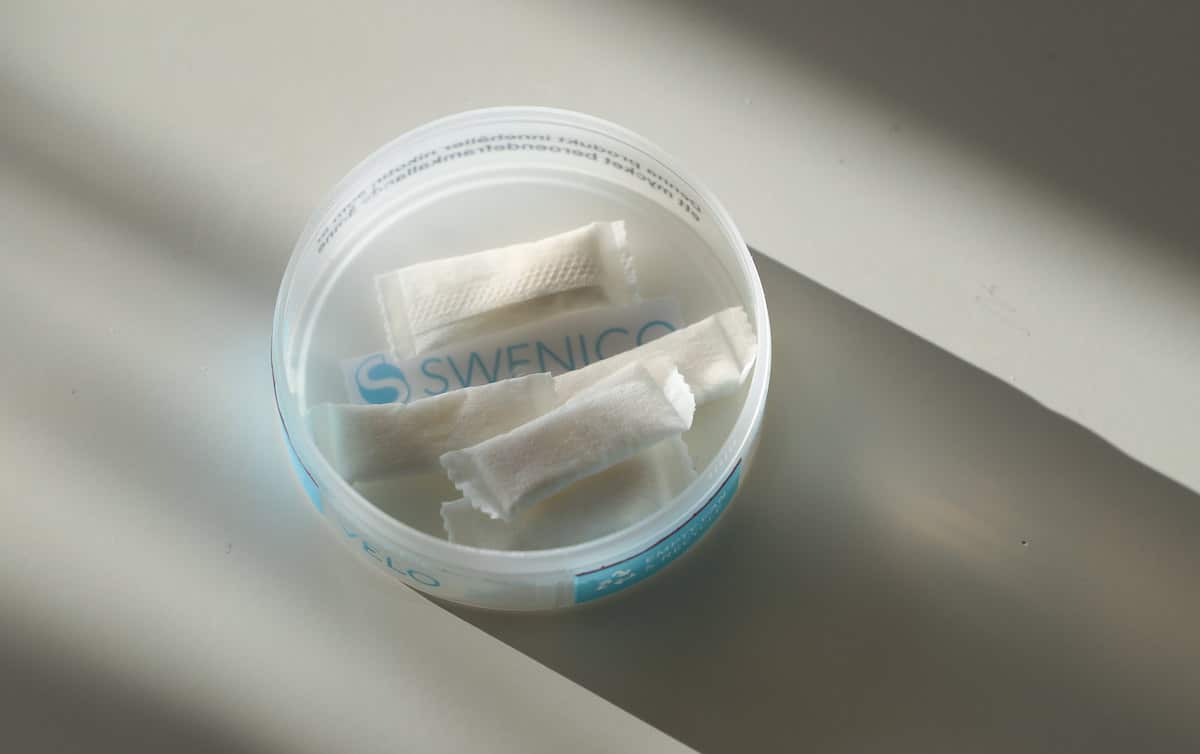Denmark’s government is introducing a package of 30 measures aimed at reducing young people’s consumption of nicotine and alcohol. The plans include raising taxes on nicotine products and banning flavors.
Advocates are dismayed by the moves, which come despite other Scandinavian countries boasting some of the world’s biggest tobacco harm reduction success stories.
Further measures, agreed by governing coalition partners and announced by the health ministry in November, include increased penalties for illegal sales; limiting availability of tobacco, nicotine and alcohol; and creating more smoke- and vapor-free environments.
“The use of tobacco, nicotine and alcohol by children and young people is in a worrying development and despite clear age limits for sales, it is today all too easy for minors to get hold of the products,” Sophie Lohde, minister for the interior and health, said in the government statement. “That is why we are now investing almost half a billion kroner … so that we can reverse the trend.”
“We provide, among other things, the authorities much more muscle and new powers to carry out effective control of the shops,” she continued. “The tax on nicotine products will be raised, and we will ban sweet flavors that appeal to children and young people.”
Danish tobacco harm reduction advocate Kim Dabelstein Petersen called the developments “horrible and scary.”
Among people aged 15-29 in Denmark, use of smokeless products like vapes and nicotine pouches—whether daily or occasionally—rose from just over 9 percent in 2020 to almost 13 percent in 2022, according to the national public health institute.
Smoking prevalence has meanwhile been falling. But an estimated 18.6 percent of adults smoke, and the country suffers over 11,000 annual smoking-related deaths.
Danish tobacco harm reduction advocate Kim Dabelstein Petersen fears that the latest policy developments, which he called “horrible and scary,” will prevent a lot of people from quitting cigarettes with the help of harm reduction products, as he did himself.
“The whole agreement,” he told Filter, “is based upon protecting youth against potential and scientifically unsubstantiated harm without any real view of how it will impact the adult population—where smoking is actually killing.”
Denmark already banned e-liquid flavors in 2022—important to people who switch to vapes from cigarettes—with only tobacco and menthol now permitted.
“The most tragic aspect is it has become easier for children to obtain illegal e-cigarettes than for adults to purchase legal ones.”
Since then, “the number of e-cigarette users utilizing fruit, candy and other flavors has, ironically, seen an increase,” Jeanett Andersen, who works for GEjSER, Denmark’s largest vape retailer chain, told Filter. “The most tragic aspect of this situation is that it has become easier for children to obtain illegal e-cigarettes than for adults to purchase legal ones.”
Andersen pointed out that when the flavor ban was implemented, taxes were also introduced on e-liquids containing nicotine. Yet recent data, she said, indicate an increase in vaping among young people through a growing illicit market. Social media platforms make it “easier than ever to access nicotine products that do not comply with the Danish or [European Union] regulations.”
Andersen called the government’s latest plans “a tragicomic piece of news.”
Nicotine pouches, an increasingly popular harm reduction option in different parts of the world, will be hit particularly hard. Not only will flavors be banned, but taxes will be doubled—removing the financial incentive to purchase safer products instead of cigarettes. Andersen said these measures will have the same effect previously seen with vapes.
“Reducing [smoking] rates is not just about restrictions; it’s about practical alternatives,” Michael Landl, director of the World Vapers’ Alliance, told Filter. “Products like vaping and nicotine pouches aren’t merely substitutes, they’re crucial tools in mitigating the risk associated with traditional cigarettes. Embracing these alternatives, rather than constraining them, is a vital step towards improving public health.”
Perhaps the most noticeable lost opportunity in Denmark’s context is with snus, an oral tobacco product that lacks many of the health risks of smoking.
Neighboring Sweden now has the lowest smoking rate in Europe after decades of mass switching from cigarettes to snus—and notably low rates of lung cancer. In Norway, too, snus use has dramatically outstripped smoking in recent years.
Denmark is committed to being “smoke-free” by 2030. But Sweden is almost there already.
In September, Sweden announced a step clearly aimed at accelerating this trend: reducing tax on snus by 20 percent, while increasing tax on combustible tobacco by 9 percent.
When Sweden joined the EU in 1995, it negotiated an exemption from the bloc’s ban on snus sales. (Norway is not a full EU member.)
But in Denmark, which had a past legal battle with the EU over the issue, the situation is “complicated,” notes the Global State of Tobacco Harm Reduction: “While it is illegal to import snus for trade or buy the product online, it is possible to import it for personal use.”
Denmark is committed to being “smoke-free” by 2030, meaning, under the EU’s definition, that less than 5 percent of its population will smoke. But Sweden is almost there already.
“While Sweden is on its way to becoming the first smoke-free country by endorsing safer nicotine alternatives and lowering taxes, Denmark is pushing for higher taxes and thus stealing the choice of adults to access harm reduction products,” Liza Katsiashvili, director of operations at the World Vapers’ Alliance, told Filter.
Denmark’s latest plans, she said, “will only prevent progress of smoking cessation and nothing else.”
Photograph of nicotine pouches by Swenico.com via Flickr/Creative Commons 2.0
Both The Influence Foundation, which operates Filter, and INNCO, for which Kim Dabelstein Petersen works, have received grants from the Foundation for a Smoke-Free World.





Show Comments